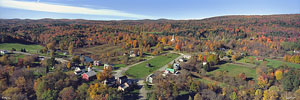RSS Mesoscale Discussions from Storm Prediction Center
No watches are valid as of Sun Dec 14 06:46:02 UTC 2025.

No Mesoscale Discussions are in effect as of Sun Dec 14 06:46:02 UTC 2025.
SPC 1200Z Day 1 Outlook

Day 1 Convective Outlook
NWS Storm Prediction Center Norman OK
1118 PM CST Sat Dec 13 2025
Valid 141200Z - 151200Z
...NO SEVERE THUNDERSTORM AREAS FORECAST...
...SUMMARY...
A few storms are possible across South Florida and the Florida Keys,
as well as the western Gulf Coast today.
...Discussion...
Strong upper trough over the Great Lakes/Midwest region will advance
off the Middle Atlantic Coast by 15/06z as the primary midlevel
speed max translate well downstream. Dominant surface anticyclone
will settle into the mid MS/OH Valley region by late afternoon which
will effectively drive the cold front deep into Mexico and across
the southern FL Peninsula. Early in the period, isolated
thunderstorms may be noted along the trailing cold front across the
northwestern Gulf Coast region. Some risk for a few flashes of
lighting are also possible with weak convection across the southern
FL Peninsula before flow veers and stronger convergence shifts
offshore.
..Darrow/Wendt.. 12/14/2025
Read more
SPC 0700Z Day 2 Outlook

Day 2 Convective Outlook
NWS Storm Prediction Center Norman OK
1242 AM CST Sun Dec 14 2025
Valid 151200Z - 161200Z
...NO SEVERE THUNDERSTORM AREAS FORECAST...
...SUMMARY...
A few thunderstorms are possible in western Oregon and Washington on
Monday.
...Discussion...
A strong area of high pressure will dominate the eastern CONUS on
Monday with rich low-level moisture pushed well south into the Gulf.
Therefore, no thunderstorms are expected for most of the CONUS on
Monday. The only exception will be western Oregon/Washington. A
strong surface low will move into British Columbia, with some modest
northward moisture push ahead of a cold front. This low-level
moisture advection, combined with cooling temperatures aloft with
the associated mid-level trough, should result in weak instability
on Monday. A few lightning flashes will be possible.
..Bentley.. 12/14/2025
Read more
SPC Day 1 Fire Weather Outlook

Day 1 Fire Weather Outlook
NWS Storm Prediction Center Norman OK
1141 PM CST Sat Dec 13 2025
Valid 141200Z - 151200Z
...NO CRITICAL AREAS...
...Synopsis...
An upper-level trough will move through the Mid-Atlantic/Northeast
today and eventually move off the East Coast by Monday morning. Cold
air will continue to filter into the Southeast. Some dry and breezy
conditions are possible in southeastern Wyoming. Additionally gusty
northerly winds with modest RH reductions are expected in the
Southeast behind the cold front. Given the cool/cold temperatures
and poor fuel receptiveness across much of the CONUS, fire weather
concerns will remain low.
..Wendt.. 12/14/2025
...Please see www.spc.noaa.gov/fire for graphic product...
Read more
SPC Day 2 Fire Weather Outlook

Day 2 Fire Weather Outlook
NWS Storm Prediction Center Norman OK
1142 PM CST Sat Dec 13 2025
Valid 151200Z - 161200Z
...NO CRITICAL AREAS...
...Synopsis...
An upper ridge will continue shift eastward into more of the central
CONUS on Monday. Surface high pressure will remain in the Southeast.
Breezy return flow will occur across parts of the southern Plains,
but cooler temperatures should continue to limit RH reductions.
Locally dry and breezy conditions are again possible in southeast
Wyoming. Fuels in parts of these regions may support brief, locally
elevated conditions, but greater fire weather concerns are not
expected.
..Wendt.. 12/14/2025
...Please see www.spc.noaa.gov/fire for graphic product...
Read more
|



